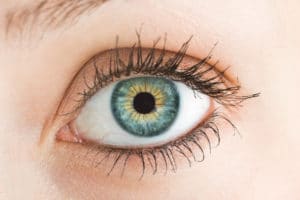
Diabetes Related Eye Issues – Did you know that one in every four Americans diabetics experience problems with their vision because of their diabetes? These type 1 and type 2 diabetes related issues include:
Glaucoma
Retinopathy
Diabetes Related Issues: Glaucoma, Cataracts and Retinopathy
In fact, diabetes related issues can cause blindness. With regular eye exams at Clarity Vision, however, you can keep any vision or eye health problems under control. Your eye doctor can also find signs of the above problems early for treatment and to prevent worsening of your eye condition.
If you have type 1 or type 2 diabetes, schedule an eye exam with your nearest Clarity Vision location today. These locations in North Carolina and Virginia include:
Glaucoma
Glaucoma is one of the diabetes-related issues that affect people with diabetes. Also, glaucoma is not exclusive to diabetics, although having uncontrolled blood sugar increases your risk. Your risk increases the longer you have diabetes and with age.
With glaucoma, pressure builds up in your eye and pinches blood vessels. These blood vessels normally supply blood to the optic nerve and retina. When pressure cuts the blood flow off, this damages the nerve and retina. As a result, you lose your vision.
If you suffer glaucoma, your eye doctor can treat your diabetes related issues. Medication can control the pressure in your eyes. Surgery is another possibility.
Cataracts
Cataracts affect people with and without diabetes. But diabetics experience a higher likelihood for this clouding of the eye’s clear lens that blocks vision. If you suffer diabetes, you also have a higher risk for developing cataracts at an earlier age than other adults, with more rapid progression of your eye condition.
If you suffer mild cataracts, you should wear sunglasses when outside. You also benefit from glare-control lenses in your eyeglasses. When your cataracts disrupt vision, surgery is a possible treatment. In this surgery, your ophthalmologist removes the lens of your affected eye, replacing it with an artificial lens.
Retinopathy
Retinopathy is not one eye condition. Instead, it is a collection of diabetes related issues of the eye. The common thread between these disorders is that they affect the retina. The two primary types of retinopathy include nonproliferative and proliferative.
Nonproliferative retinopathy causes capillaries in the back of the eye to expand and form pouches. The disease progresses through three stages. The stages are mild, moderate and severe. One effect of this type of retinopathy is macular edema, as part of which fluid leaks into the macula of the eye, where focusing occurs. This blurs your eyesight and can cause vision loss, unless you receive treatment from your eye doctor.
Proliferative retinopathy is the more serious form of retinopathy, in which damaged blood vessels close. As a result of this, the eye grows more blood vessels in the retina. But these weak vessels can leak blood, causing growth of scar tissue and blocking of vision. Shrinking scar tissue can also distort the retina or cause retinal detachment.
Treatments for retinopathy include:
Scatter photocoagulation
Focal photocoagulation
Vitrectomy
Scatter photocoagulation and focal photocoagulation use lasers with great precision to burn retinopathy-affected parts of the eye. Vitrectomy is a surgery that removes scar tissue and cloudy fluid within the eye. There are also other new treatments for diabetes related issues of the eye. For macular edema, the most common treatments are focal laser therapy and injection of medications into the eye.
Reducing Your Risk for Diabetes Related Issues
When it comes to vision and diabetes, one thing is clear. That is, you risk development of diabetes related issues. For this reason, it is important to take good care of yourself, including your eyes.
Risk factors for diabetes related issues like these include:
Uncontrolled blood sugar
High blood pressure
Long-term diabetes
Genetics
Unfortunately, almost everyone with type 1 and type 2 diabetes develops nonproliferative retinopathy. Although the proliferative form is not as common, it is the type of diabetes related issues that cause blindness. This makes it very important to maintain stable blood sugar levels in a normal range.
The majority of people who suffer retinopathy do not experience symptoms until the damage is done. This makes seeing your eye doctor at Clarity Vision very important if you have type 1 or type 2 diabetes.
















